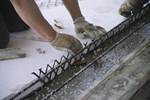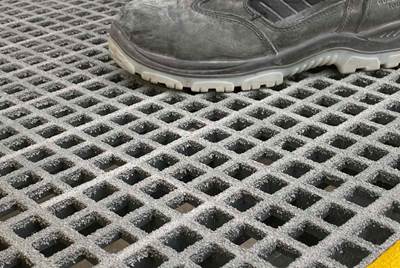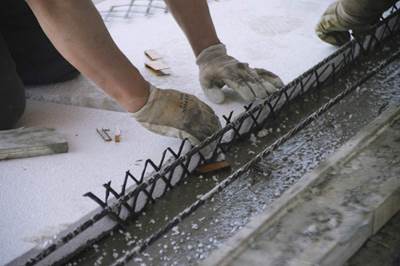Dura Composites calls for reconsideration of U.K. Building Safety Act fire regulations
With incorrect enforcement hampering vital remedial work, Dura Composites provides checklist for specifiers seeking composite and metal products for high-rise building projects.
An example of Dura Composites’ composite terrace decking with A1 fire classification. Source | Dura Composites
Manufacturer of composite and metal solutions for civil infrastructure Dura Composites (Clacton-on-Sea, U.K.) is calling for an urgent rethink of the U.K.’s safety regulations relating to decking and cladding for high-rise buildings, and how they are implemented. The company is also putting pressure on industry regulators to enforce tighter rules about fire testing.
According to the company, there is currently a level of confusion surrounding the exact criteria that different products need to comply with for buildings over the height of 11 meters. While cladding requires a classification of A2-s1,d0, states that for flooring, a classification of A2fl-s1 should be achieved.
However in practice, remedial designers are grouping these two very different products together and requesting an A2-s1d0 fire classification for all. Unless there is an imperforate substrate under it which extends to the full area of the balcony where A2fl-s1 materials are fitted, then A2fl-s1 is allowed.
In other cases, Dura Composites has concerns that officials aren’t upholding products to regulations stringently enough. Common issues include products not being tested by a UKAS-accredited test facility or in the right orientation, not being tested for the correct field of application, and not being tested in the right color, all of which are stated in the BS EN13501 fire classification standards and can affect the fire-resistance of decking, potentially putting occupants in danger, and leaving those in charge liable.
Furthermore, some decking providers are circumventing the official UKAS accreditation, by having products tested in other countries with less strict requirements, before transporting them to the U.K.
“It’s looking likely the government won’t meet its target to start or complete remedial works on all buildings by July 2027,” says Lee Cavalier, decking and cladding manager at Dura Composites. “A big factor behind this is the rules themselves, both in terms of clarity over what is required, and actually enforcing these standards. Clearer rules and processes would prevent accidents and be fairer on suppliers, contractors and buyers. When manufacturers aren’t clear on the ratings required for their own products, it’s no surprise that awareness among housebuilders, developers and contractors is low.”
What should specifiers be asking? Dura Composites says that specifiers can protect themselves by asking the following questions about products, testing and installation for high-rise buildings:
- Is the certificate provider UKAS-accredited?
- Has every component of the product received a fire rating? Different aspects of a product may perform differently, so there should be a fire rating for each individual component.
- Do the fire rating and test certificate match the field of application?
- Does the installation guide advise on installation methods to match the field of application?
- Each product should be installed using a specific method to achieve its stated fire rating.
- Has the right orientation been tested? Different orientations may impact the fire rating of the product. Decking products should be tested horizontally, and cladding products should be tested in their intended orientation.
- Have all of the available colors been tested? Different colors of a product may impact its fire rating.
- Does the fire certificate state which colors are covered, specifically in section 4 of the field of application? For example, only a single color is listed followed by “no variation allowed.”
Uncertainty over regulations isn’t the only thing holding up successful remediation work, Dura notes. It was recently announced that the Building Safety Regulator has missed its target to clear the backlog of Gateway 2 approvals by April. While thorough processes are important, this is yet another factor preventing remedial work that is crucial to residents’ safety.
Dura Composites has submitted its concerns to the Building Safety Regulator and is encouraging other manufacturers to join the cause, asking for more transparency over fire safety standards for high-rise decking and cladding.
Read Next
Dura Composites earns U.K. business award for low embodied carbon GFRP products
Nationally recognized King’s Award for Enterprise highlights Dura’s composite walkway grating products for their sustainability credentials.
Read MoreComposites-reinforced concrete for sustainable data center construction
Metromont’s C-GRID-reinforced insulated precast concrete’s high strength, durability, light weight and ease of installation improve data center performance, construction time and sustainability.
Read MoreACMA announces PCR publication for platforms, stairways
Product category rule (PCR) provides guidance to builders and architects preparing LCAs and EDPS for platforms and stairways made from FRP composites, steel and more.
Read More









